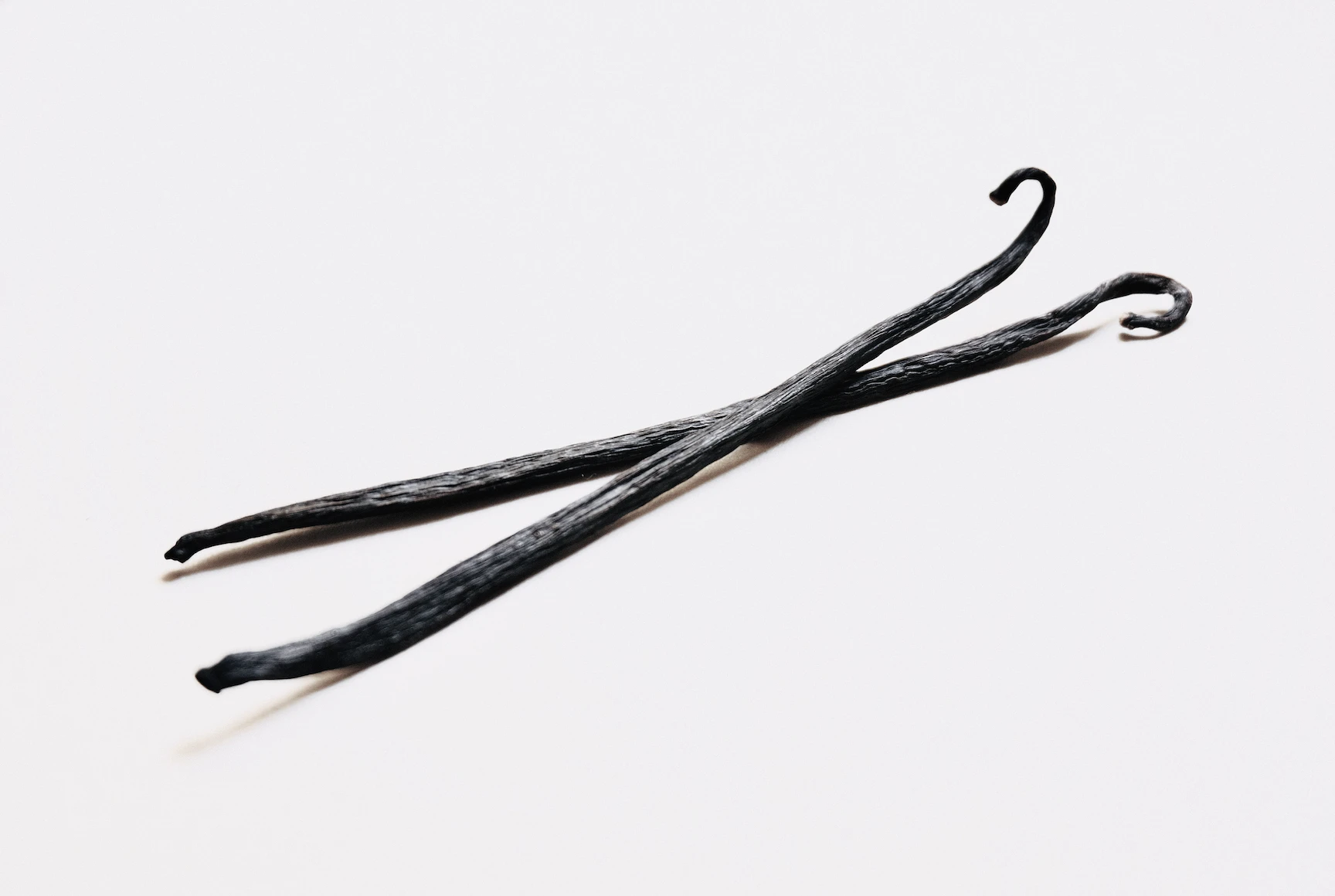Vanilla has an utterly ineffable sweet, spicy, slightly smoky aroma, which it easily imparts to the dish it goes into. Real vanilla is the pods of a species of orchid. These plants are grown in countries with specific climates – Hawaii, Mexico, Tahiti, Madagascar, Indonesia and other tropical regions. This spice is very expensive: its price is surpassed only by saffron. That said, it is used all too often, not just in European kitchens, but around the world.
To make vanilla a spice, the vanilla pods are picked at a certain point (not full ripeness) and placed in hot water (around 85 °C) for around 20 seconds. In culinary parlance, you can say that they are blanched. The pods are then fermented at a lower temperature for about another two weeks. During this time they change color, become brown and dry, and develop a distinctive flavor and aroma.
Vanilla seeds are used in cooking. To remove the seeds you must pierce the pod with the tip of a knife all the way around its base and then scrape away the seeds with the blunt end.
What vanilla is
Vanilla is not a cheap treat. Luckily, there are more affordable alternatives to save us money. For example, vanilla sugar (which, however, can only be used in pastries and desserts) or vanillin. True, it is worth saying that this is not vanilla in its pure form, but only a synthetic analog. Read more below.
Formats of vanilla and its analogues:
Vanilla extract (or essence). It is made by steeping the vanilla pods in alcohol. It must not contain any flavoring or other impurities – only two ingredients. Their presence certainly lowers the price, but has a negative effect on quality. The essence and extract (concentration difference) do not cope well with high temperatures – the aroma simply evaporates. So it is best to add it to a cream, for example. This format is very economical – a few drops to a teaspoon will suffice, depending on the concentration.
Vanilla paste. We meet less often than other forms of spice, but on marketplaces and pastry shops can be found for not too much money. The composition may vary, but it is better to choose as natural as possible. The leading ingredients are vanilla seeds, sugar and binders, or vanilla and invert sugar syrup. Used usually in desserts, it is impossible to find such a product without sugar.Con- even from a vacuum pack, the flavor gradually evaporates, the spice becomes more and more neutral over time.
Vanillin is not really vanilla. More precisely, it is both a substance found in vanilla, but in confectionery it is more often a synthetic counterpart, a white powder with a creamy vanilla flavor and aroma. It is essentially a food additive, a flavoring. It can be very cheap , but there are more expensive and better quality analogues (where vanillin is the only component).
Vanilla sugar. It’s simple – it’s vanillin mixed with sugar. The powder is quite sweet but cheap. In a regular supermarket, 8g of vanilla sugar from a well-known confectionery company.

